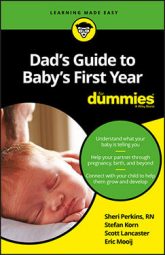- Almond or coconut oil: Your baby doesn’t need moisturizers or scented lotions. If she has dry skin, pure oil is best without all the toxins and fillers big companies use to preserve their products. Cold-pressed, unrefined vegetable oils made for baby use are best — health food stores may be your best source for these.
- Antibacterial cream: Stop infections in cuts and grazes by treating them with antibacterial cream. Ask your healthcare provider for recommendations.
- Baby wipes and warmer: This may seem silly to you, but imagine having your butt wiped with a cold, wet piece of paper, and it might make more sense. Wipes makes cleanup easier, and warmers that warm the wipes makes your baby’s life more pleasant. Win-win.
- Child’s sunscreen and insect repellent: These are essential if you live in warm climates and in the summer, but the best form of protection is clothing and keeping out of the sun. Babies’ skin is a lot more sensitive than adults’ skin, so junior can burn even when he is not exposed to direct sunlight.
- Digital thermometer: If junior is sick with a cold or flu, you can help determine when it’s time to whip him off to the doctor by using a digital thermometer to check his temperature. Take your baby’s temperature by putting the thermometer under his arm, called the axillary temperature, or by using a digital thermometer that fits into the ear canal, if he’s older than 6 months.
Temporal thermometers that are swept across the forehead can also be used. Most parents break out in a cold sweat at the thought of using a rectal thermometer, but it does give an extremely accurate reading. A reading of 100.4 degrees Fahrenheit or greater is considered a fever, no matter which thermometer you’re using.
- Nail clippers or baby nail scissors: Babies can scratch themselves easily, so you need to keep their nails short and neat. This is easier said than done. Try clippers or special baby scissors to see what works best for you. A nail file may also be easier to use on your wiggling baby.
- Pain reliever: Children’s acetaminophen or ibuprofen for kids is used for pain and fever after immunizations, teething, and fever when your baby has a cold. Use a plastic syringe with measurements marked on the side to dispense the medication and check with your doctor for the correct dosage (which is worked out by baby’s weight).
Aspirin is not suitable for young children and can be dangerous in some cases.
- Teething relief: Teething gels can help soothe a teething baby’s gums.
Check with your pediatrician before giving your baby any type of medication if he’s younger than six months old. Always check the label on any medical product (or any product, in fact) to make sure it’s suitable for your baby’s age. If you’re unsure whether it’s suitable, check with your pediatrician.
Be prepared to keep adding to your household first-aid kit with bandages, scissors, and tweezers as your little one gets older and encounters more little accidents.

